SLOS417D October 2003 – November 2015 TPA2010D1
PRODUCTION DATA.
- 1 Features
- 2 Applications
- 3 Description
- 4 Device Comparison Table
- 5 Pin Configuration and Functions
- 6 Specifications
- 7 Parameter Measurement Information
- 8 Detailed Description
- 9 Application and Implementation
- 10Power Supply Recommendations
- 11Layout
- 12Device and Documentation Support
- 13Mechanical, Packaging, and Orderable Information
Package Options
Mechanical Data (Package|Pins)
- YZF|9
Thermal pad, mechanical data (Package|Pins)
Orderable Information
9 Application and Implementation
NOTE
Information in the following applications sections is not part of the TI component specification, and TI does not warrant its accuracy or completeness. TI’s customers are responsible for determining suitability of components for their purposes. Customers should validate and test their design implementation to confirm system functionality.
9.1 Application Information
These typical connection diagrams highlight the required external components and system level connections for proper operation of the device in several popular use cases. Each of these configurations can be created using the Evaluation Modules (EVMs) for the device. These flexible modules allow full evaluation of the device in the most common modes of operation. Any design variation can be supported by TI through schematic and layout reviews. Visit TI.com for design assistance and join the audio amplifier discussion forum for additional information.
9.2 Typical Applications
Figure 34 shows the TPA2010D1 typical schematic with differential inputs and Figure 38 shows the TPA2010D1 with differential inputs and input capacitors, and Figure 39 shows the TPA2010D1 with single-ended inputs. Differential inputs should be used whenever possible because the single-ended inputs are more susceptible to noise.
9.2.1 TPA200110D1 With Differential Input
Use the values listed in Table 1 as the design requirements. The TPA2010D1 can be used with differential input without input capacitors. This section describes the design considerations for this application.
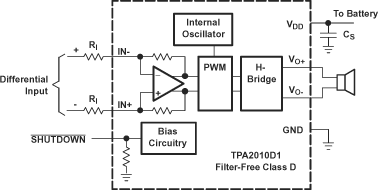 Figure 34. TPA2010D1 with Differential Input
Figure 34. TPA2010D1 with Differential Input
9.2.1.1 Design Requirements
Use the values listed in Table 1 as the design requirements.
Table 1. Design Requirements
| PARAMETER | EXAMPLE VALUE |
|---|---|
| Power supply | 5 V |
| Shutdown input | High > 2 V |
| Low < 0.8 V | |
| Speaker | 8 Ω |
9.2.1.2 Detailed Design Procedure
Table 2 lists the typical components values.
Table 2. Typical Component Values
| REF DES | VALUE | EIA SIZE | MANUFACTURER | PART NUMBER |
|---|---|---|---|---|
| RI | 150 kΩ (±0.5%) | 0402 | Panasonic | ERJ2RHD154V |
| CS | 1 µF (+22%, –80%) | 0402 | Murata | GRP155F50J105Z |
| CI(1) | 3.3 nF (±10%) | 0201 | Murata | GRP033B10J332K |
9.2.1.2.1 Input Resistors (RI)
The input resistors (RI) set the gain of the amplifier according to Equation 19.

Resistor matching is very important in fully differential amplifiers. The balance of the output on the reference voltage depends on matched ratios of the resistors. CMRR, PSRR, and cancellation of the second harmonic distortion diminish if resistor mismatch occurs. Therefore, TI recommends to use 1% tolerance resistors or better to keep the performance optimized. Matching is more important than overall tolerance. Resistor arrays with 1% matching can be used with a tolerance greater than 1%.
Place the input resistors very close to the TPA2010D1 to limit noise injection on the high-impedance nodes.
For optimal performance, set the gain to 2 V/V or lower. Lower gain allows the TPA2010D1 to operate at its best, and keeps a high voltage at the input making the inputs less susceptible to noise.
9.2.1.2.2 Decoupling Capacitor (CS)
The TPA2010D1 is a high-performance class-D audio amplifier that requires adequate power supply decoupling to ensure the efficiency is high and total harmonic distortion (THD) is low. For higher frequency transients, spikes, or digital hash on the line, a good low equivalent-series-resistance (ESR) ceramic capacitor, typically
1 µF, placed as close as possible to the device VDD lead works best. Placing this decoupling capacitor close to the TPA2010D1 is very important for the efficiency of the class-D amplifier, because any resistance or inductance in the trace between the device and the capacitor can cause a loss in efficiency. For filtering lower-frequency noise signals, a 10 µF or greater capacitor placed near the audio power amplifier would also help, but it is not required in most applications because of the high PSRR of this device.
9.2.1.3 Application Curves
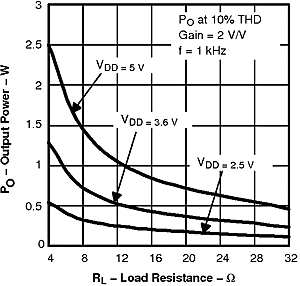 Figure 35. Output Power versus Load Resistance
Figure 35. Output Power versus Load Resistance
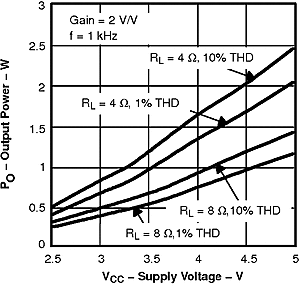 Figure 37. Output Power versus Load Resistance
Figure 37. Output Power versus Load Resistance
 Figure 36. Output Power versus Load Resistance
Figure 36. Output Power versus Load Resistance
9.2.2 TPA20010D1 With Differential Input and Input Capacitors
The TPA20010D1 supports differential input operation with input capacitors. This section describes the design considerations for this application.
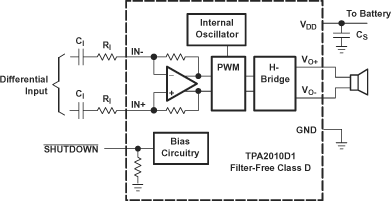 Figure 38. TPA2010D1 With Differential Input and Input Capacitors
Figure 38. TPA2010D1 With Differential Input and Input Capacitors
9.2.2.1 Design Requirements
Refer to the Design Requirements section.
9.2.2.2 Detailed Design Procedure
Refer to the Detailed Design Procedure section.
9.2.2.2.1 Input Capacitors (CI)
The TPA2010D1 does not require input coupling capacitors if the design uses a differential source that is biased from 0.5 V to VDD –0.8 V (shown in Figure 34). If the input signal is not biased within the recommended common-mode input range, if needing to use the input as a high pass filter (shown in Figure 38), or if using a single-ended source (shown in Figure 39), input coupling capacitors are required.
The input capacitors and input resistors form a high-pass filter with the corner frequency, fc, determined in Equation 20.

The value of the input capacitor is important to consider as it directly affects the bass (low frequency) performance of the circuit. Speakers in wireless phones cannot usually respond well to low frequencies, so the corner frequency can be set to block low frequencies in this application.
Equation 21 is reconfigured to solve for the input coupling capacitance.

If the corner frequency is within the audio band, the capacitors should have a tolerance of ±10% or better, because any mismatch in capacitance causes an impedance mismatch at the corner frequency and below.
For a flat low-frequency response, use large input coupling capacitors (1 µF). However, in a GSM phone the ground signal is fluctuating at 217 Hz, but the signal from the codec does not have the same 217 Hz fluctuation. The difference between the two signals is amplified, sent to the speaker, and heard as a 217 Hz hum.
9.2.2.3 Application Curves
Refer to the Application Curves section.
9.2.3 TPA20010D1 with Single-Ended Input
The TPA20010D1 can be used with Single-Ended inputs, using Input capacitors. This section describes the design considerations for this application.
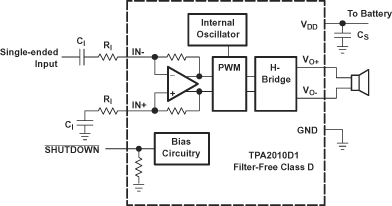 Figure 39. TPA2010D1 with Single-Ended Input
Figure 39. TPA2010D1 with Single-Ended Input
9.2.3.1 Design Requirements
Refer to the Design Requirements section.
9.2.3.2 Detailed Design Procedure
Refer to the Detailed Design Procedure section.
9.2.3.3 Application Curves
Refer to the Application Curves section.